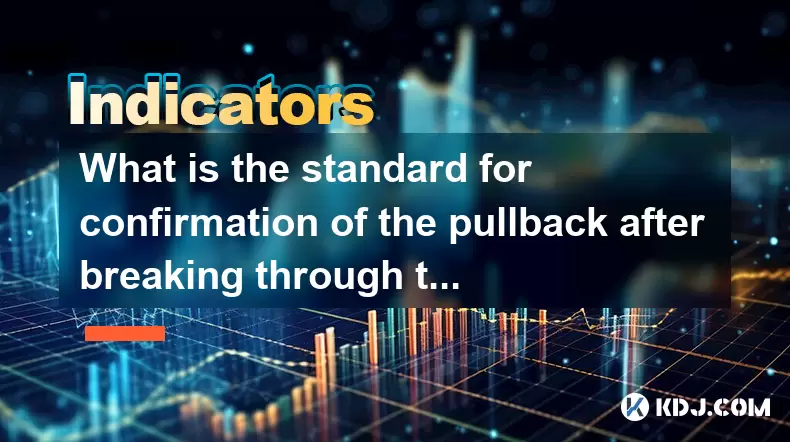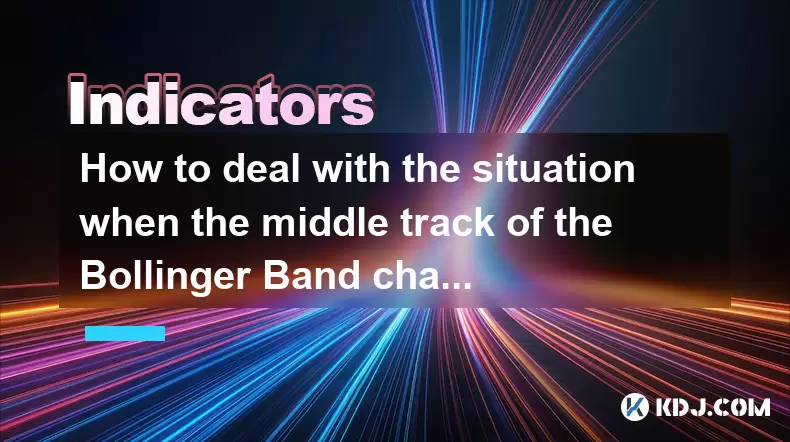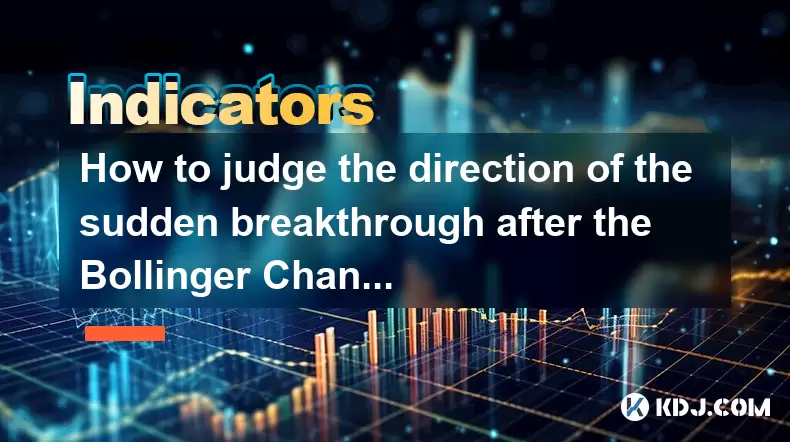-
 Bitcoin
Bitcoin $101,898.5005
-0.75% -
 Ethereum
Ethereum $2,258.1125
-1.07% -
 Tether USDt
Tether USDt $1.0004
0.01% -
 XRP
XRP $2.0178
-2.93% -
 BNB
BNB $624.0243
-1.53% -
 Solana
Solana $134.3298
-0.90% -
 USDC
USDC $0.9999
0.01% -
 TRON
TRON $0.2675
-2.05% -
 Dogecoin
Dogecoin $0.1538
-1.96% -
 Cardano
Cardano $0.5482
-1.11% -
 Hyperliquid
Hyperliquid $35.5636
5.45% -
 Bitcoin Cash
Bitcoin Cash $453.4902
-1.66% -
 Sui
Sui $2.5134
-2.97% -
 UNUS SED LEO
UNUS SED LEO $9.1292
1.77% -
 Chainlink
Chainlink $11.8457
-1.60% -
 Stellar
Stellar $0.2312
-2.73% -
 Avalanche
Avalanche $16.9721
0.29% -
 Toncoin
Toncoin $2.7549
-3.82% -
 Shiba Inu
Shiba Inu $0.0...01081
-1.10% -
 Litecoin
Litecoin $80.8250
-0.71% -
 Hedera
Hedera $0.1374
0.21% -
 Monero
Monero $305.4827
-2.36% -
 Ethena USDe
Ethena USDe $1.0006
0.00% -
 Dai
Dai $1.0000
-0.01% -
 Polkadot
Polkadot $3.2085
-3.12% -
 Bitget Token
Bitget Token $4.0845
-3.13% -
 Uniswap
Uniswap $6.3353
-1.63% -
 Pi
Pi $0.5085
-0.70% -
 Pepe
Pepe $0.0...08913
-3.82% -
 Aave
Aave $232.7090
-0.58%
How to cooperate with KDJ and trading volume? How to operate when the volume and price diverge?
Combining KDJ with trading volume enhances trading decisions; high volume confirms KDJ signals, while divergence may signal trend reversals.
May 23, 2025 at 06:57 am

Introduction to KDJ and Trading Volume
Understanding the KDJ indicator is essential for any trader looking to enhance their technical analysis toolkit. The KDJ, also known as the Stochastic Oscillator, is a momentum indicator that helps traders identify potential overbought or oversold conditions in the market. It consists of three lines: the K line, the D line, and the J line. The K and D lines are used to generate trading signals, while the J line is a more sensitive version of the K line and is often used for confirmation.
Trading volume, on the other hand, is a critical metric that reflects the total number of shares or contracts traded in a given period. It provides insights into the strength behind price movements. High volume during a price increase suggests strong buying pressure, while high volume during a price decrease indicates strong selling pressure. Conversely, low volume during price movements may indicate a lack of conviction in the market direction.
Cooperating KDJ with Trading Volume
Combining the KDJ indicator with trading volume can significantly enhance your trading decisions. The KDJ can signal potential entry or exit points, but these signals can be validated by analyzing the accompanying trading volume. For instance, if the KDJ indicates an overbought condition and the trading volume is high, this may confirm a strong bearish reversal signal.
To effectively cooperate KDJ with trading volume, follow these steps:
- Monitor the KDJ lines: Look for the K line crossing above the D line to signal a bullish trend and below the D line to signal a bearish trend.
- Assess the trading volume: High volume should accompany the KDJ signals to validate their strength. Low volume may indicate that the signal might not be reliable.
- Combine signals: If the KDJ indicates an overbought condition and the volume is high, consider it a strong sell signal. If the KDJ indicates an oversold condition and the volume is high, consider it a strong buy signal.
Operating When Volume and Price Diverge
Divergence between volume and price is a crucial concept in technical analysis. It occurs when the price moves in one direction, but the volume does not support the movement. This can signal a potential reversal or continuation of the trend.
When the volume and price diverge, you should:
- Identify the divergence: Look for situations where the price is increasing, but the volume is decreasing, or vice versa.
- Analyze the KDJ indicator: Check if the KDJ supports the divergence. For example, if the price is rising but the volume is falling, and the KDJ indicates an overbought condition, it might signal a bearish reversal.
- Make a trading decision: Based on the divergence and KDJ signals, decide whether to enter or exit a position. If the divergence suggests a reversal, consider taking a position in the opposite direction of the current trend.
Practical Example of KDJ and Volume Cooperation
Let's consider a practical example to illustrate how to cooperate KDJ with trading volume. Suppose you are analyzing the daily chart of a cryptocurrency, and you notice the following:
- The KDJ lines show that the K line has crossed above the D line, indicating a potential bullish trend.
- The trading volume has been increasing over the past few days, suggesting strong buying pressure.
In this scenario, you would:
- Confirm the bullish signal: The KDJ indicates a bullish trend, and the high volume supports this signal.
- Enter a long position: Based on the confirmed bullish signal, you might decide to buy the cryptocurrency, anticipating further price increases.
Handling Volume and Price Divergence in Real-Time
Real-time analysis of volume and price divergence requires constant monitoring and quick decision-making. Here’s how you can handle it:
- Set up real-time alerts: Use trading platforms that allow you to set alerts for specific conditions, such as when the price and volume diverge significantly.
- Monitor the KDJ indicator: Keep an eye on the KDJ lines to see if they support the divergence. For instance, if the price is falling but the volume is increasing, and the KDJ indicates an oversold condition, it might signal a bullish reversal.
- React quickly: Once you confirm the divergence and the KDJ signal, act swiftly to enter or exit positions. Delays can result in missed opportunities or increased risk.
Using KDJ and Volume for Risk Management
Risk management is crucial when using KDJ and trading volume for trading decisions. Here are some strategies to manage your risk effectively:
- Set stop-loss orders: Based on the KDJ and volume signals, set stop-loss orders to limit potential losses. For example, if you enter a long position based on a bullish KDJ signal and high volume, set a stop-loss below the recent low.
- Adjust position sizes: Use the strength of the KDJ and volume signals to determine your position size. Strong signals with high volume might warrant larger positions, while weaker signals with low volume might require smaller positions.
- Diversify your trades: Don’t rely solely on KDJ and volume signals for all your trades. Diversify your trading strategies to spread risk across different assets and indicators.
FAQs
Q: Can the KDJ indicator be used effectively without considering trading volume?
A: While the KDJ indicator can provide valuable signals on its own, incorporating trading volume can significantly enhance the reliability of these signals. Volume provides a confirmation of the strength behind price movements, making it a crucial component in validating KDJ signals.
Q: How often should I check the KDJ and volume to make informed trading decisions?
A: For short-term trading, it’s advisable to check the KDJ and volume at least every few hours, especially during volatile market conditions. For longer-term trading, daily or weekly checks might suffice, depending on your trading strategy.
Q: What are some common pitfalls to avoid when using KDJ and volume together?
A: One common pitfall is over-relying on the KDJ signals without considering the volume. Another is misinterpreting volume spikes as confirmation of a trend when they might be due to other factors, such as news events. Always cross-verify KDJ signals with volume and other technical indicators for a more comprehensive analysis.
Q: Are there specific cryptocurrencies that work better with KDJ and volume analysis?
A: KDJ and volume analysis can be applied to any cryptocurrency. However, cryptocurrencies with higher liquidity and trading volumes, such as Bitcoin and Ethereum, tend to provide more reliable signals due to their active trading environments.
Disclaimer:info@kdj.com
The information provided is not trading advice. kdj.com does not assume any responsibility for any investments made based on the information provided in this article. Cryptocurrencies are highly volatile and it is highly recommended that you invest with caution after thorough research!
If you believe that the content used on this website infringes your copyright, please contact us immediately (info@kdj.com) and we will delete it promptly.
- Cryptocurrencies, Coingecko, and Trending Tokens: What's Hot Now?
- 2025-06-23 23:05:12
- FUNToken: Decoding Past Trends and Getting Started in the Gaming Crypto Sphere
- 2025-06-23 22:25:12
- BTC Price Analysis: Navigating Volatility and the Quest for a New ATH
- 2025-06-23 22:25:12
- Genesis, Bitcoin Mining, and Air-Cooled Miners: A New Era?
- 2025-06-23 22:45:12
- Coinbase's Growth and Resilience: Navigating the Crypto Landscape
- 2025-06-23 22:45:12
- Bitcoin Options Market: Bullish Bets Amidst Geopolitical Jitters
- 2025-06-23 22:51:52
Related knowledge

Is it contradictory that the moving average system is arranged in a bullish pattern but the DMI shows a decline in trend strength?
Jun 23,2025 at 11:43pm
Understanding the Moving Average and DMI RelationshipIn cryptocurrency trading, technical analysis plays a crucial role in identifying potential trends and making informed decisions. Two of the most commonly used indicators are the Moving Average (MA) and the Directional Movement Index (DMI). While both tools aim to provide insight into market direction...

What is the significance of the gap formed by the gap opening not being filled within five days?
Jun 23,2025 at 09:42pm
Understanding Gaps in Cryptocurrency TradingIn the world of cryptocurrency trading, a gap refers to a situation where the price of an asset jumps from one level to another without any trading activity occurring between those two levels. This often happens over weekends or holidays when the market is closed, and significant news or events occur that impa...

What is the standard for confirmation of the pullback after breaking through the neckline with large volume?
Jun 23,2025 at 11:28pm
Understanding the Neckline in Technical AnalysisIn technical analysis, the neckline is a critical support or resistance level that appears in chart patterns such as head and shoulders, double tops, and double bottoms. It typically connects two or more lows (in the case of a head and shoulders top) or highs (in the case of a head and shoulders bottom). W...

How to deal with the situation when the middle track of the Bollinger Band changes from support to resistance?
Jun 23,2025 at 11:22pm
Understanding the Bollinger Band Middle TrackThe Bollinger Band is a widely used technical indicator in cryptocurrency trading. It consists of three lines: the upper band, the lower band, and the middle track, which is typically a 20-period simple moving average (SMA). Traders often rely on the middle track as a dynamic support or resistance level. Howe...

Does the second golden cross of MACD above the zero axis represent the continuation of strength?
Jun 23,2025 at 08:21pm
Understanding the MACD IndicatorThe Moving Average Convergence Divergence (MACD) is a widely used technical analysis tool in cryptocurrency trading. It consists of three main components: the MACD line, the signal line, and the histogram. The MACD line is calculated by subtracting the 26-period Exponential Moving Average (EMA) from the 12-period EMA. The...

How to judge the direction of the sudden breakthrough after the Bollinger Channel narrows to the extreme?
Jun 23,2025 at 11:00pm
Understanding the Bollinger Channel and Its Narrowing PatternThe Bollinger Channel is a widely used technical indicator in cryptocurrency trading, consisting of three bands: the middle band (a simple moving average), and two outer bands that represent standard deviations from the middle line. When the price consolidates for an extended period, the chann...

Is it contradictory that the moving average system is arranged in a bullish pattern but the DMI shows a decline in trend strength?
Jun 23,2025 at 11:43pm
Understanding the Moving Average and DMI RelationshipIn cryptocurrency trading, technical analysis plays a crucial role in identifying potential trends and making informed decisions. Two of the most commonly used indicators are the Moving Average (MA) and the Directional Movement Index (DMI). While both tools aim to provide insight into market direction...

What is the significance of the gap formed by the gap opening not being filled within five days?
Jun 23,2025 at 09:42pm
Understanding Gaps in Cryptocurrency TradingIn the world of cryptocurrency trading, a gap refers to a situation where the price of an asset jumps from one level to another without any trading activity occurring between those two levels. This often happens over weekends or holidays when the market is closed, and significant news or events occur that impa...

What is the standard for confirmation of the pullback after breaking through the neckline with large volume?
Jun 23,2025 at 11:28pm
Understanding the Neckline in Technical AnalysisIn technical analysis, the neckline is a critical support or resistance level that appears in chart patterns such as head and shoulders, double tops, and double bottoms. It typically connects two or more lows (in the case of a head and shoulders top) or highs (in the case of a head and shoulders bottom). W...

How to deal with the situation when the middle track of the Bollinger Band changes from support to resistance?
Jun 23,2025 at 11:22pm
Understanding the Bollinger Band Middle TrackThe Bollinger Band is a widely used technical indicator in cryptocurrency trading. It consists of three lines: the upper band, the lower band, and the middle track, which is typically a 20-period simple moving average (SMA). Traders often rely on the middle track as a dynamic support or resistance level. Howe...

Does the second golden cross of MACD above the zero axis represent the continuation of strength?
Jun 23,2025 at 08:21pm
Understanding the MACD IndicatorThe Moving Average Convergence Divergence (MACD) is a widely used technical analysis tool in cryptocurrency trading. It consists of three main components: the MACD line, the signal line, and the histogram. The MACD line is calculated by subtracting the 26-period Exponential Moving Average (EMA) from the 12-period EMA. The...

How to judge the direction of the sudden breakthrough after the Bollinger Channel narrows to the extreme?
Jun 23,2025 at 11:00pm
Understanding the Bollinger Channel and Its Narrowing PatternThe Bollinger Channel is a widely used technical indicator in cryptocurrency trading, consisting of three bands: the middle band (a simple moving average), and two outer bands that represent standard deviations from the middle line. When the price consolidates for an extended period, the chann...
See all articles
























































































